With spring at its natural length two blocks are given velocity v=1m/s. The maximum extension in spring is equal to 
a. 5cm
b. 0.5m
c. 0.25m
d. 0.1m
Step by step video & image solution for With spring at its natural length two blocks are given velocity v=1m/s. The maximum extension in spring is equal to by Physics experts to help you in doubts & scoring excellent marks in Class 12 exams.
Updated on:21/07/2023Topper's Solved these Questions
Similar Questions
Two blocks A and B of masses m & 2m placed on smooth horizontal surface are connected with a light spring. The two blocks are given velocities as shown when spring is at natural length.
(i) Find velocity of centre of mass (b) maximum extension in the spring

View SolutionThe figure shows two blocks of mass m each, connected by an ideal unstretched spring and then placed on a frictionless floor. If the blocks are given velocities v0and2v0 as shown, then the maximum extension in the spring is
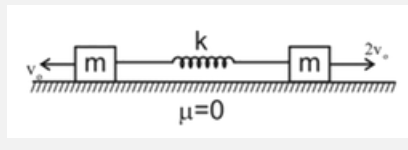
View Solution
Knowledge Check
Initially spring is in natural length and both blocks are in rest condition. Then deter mine

maximum extension in spring . K = 20 N/MA203cmB103cmC403cmD193cmA system of wedge and block as shown in figure, is released with the spring in its natural length. All surfaces are frictionless. Maximum elongation in the spring will be
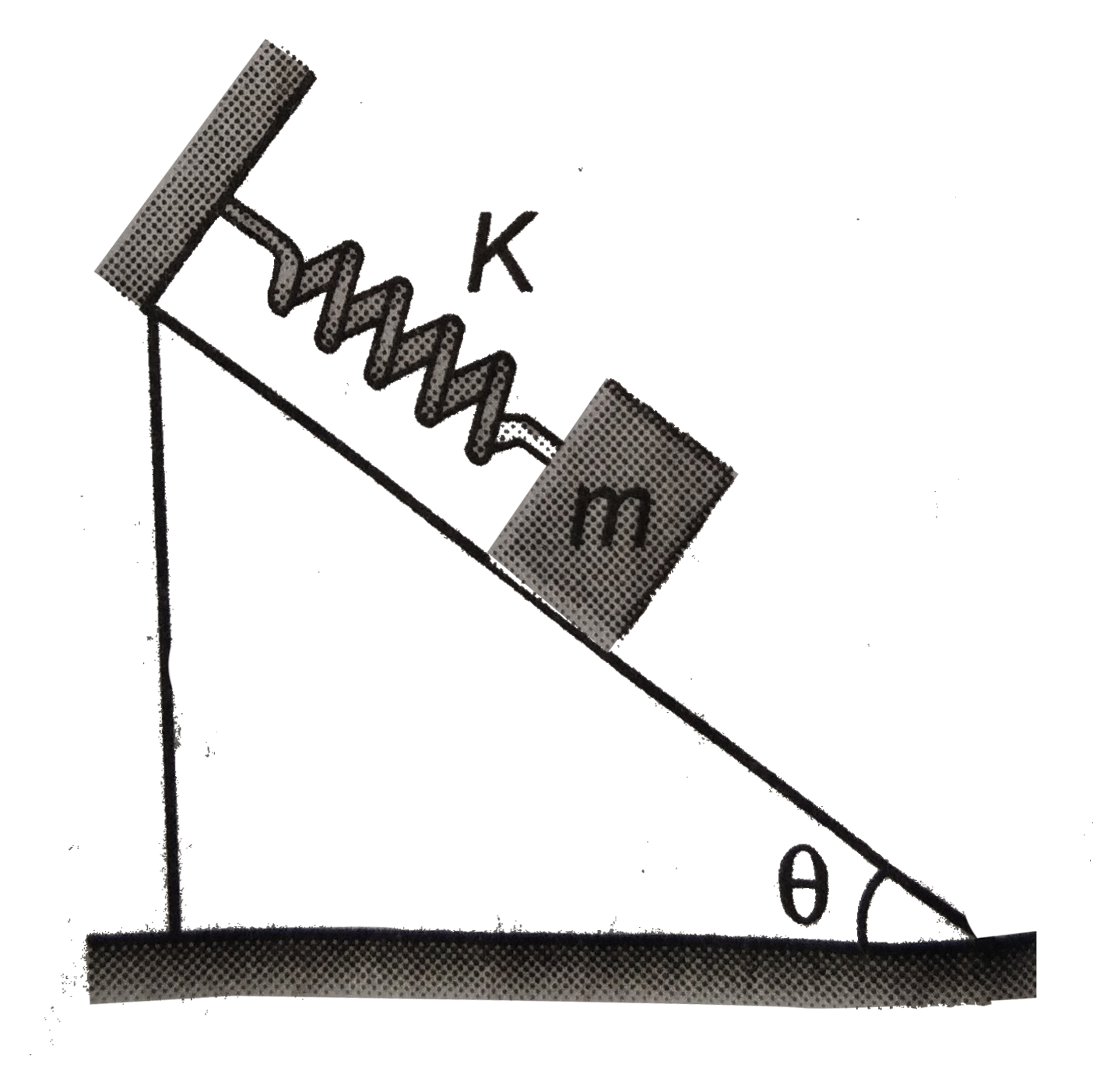 . A2mgsinθKBmgsinθKC4mgsinθKDmgsinθ2K
. A2mgsinθKBmgsinθKC4mgsinθKDmgsinθ2KBlock A of mass m is placed on a plank B. A light support S is fixed on plank B and is attached with the block A with a spring of spring constant K. Consider that initially spring is in its natural length. If the plank B is given an acceleration a, then maximum compression in the spring is xmak. Find the value of x (All the surface are smooth)
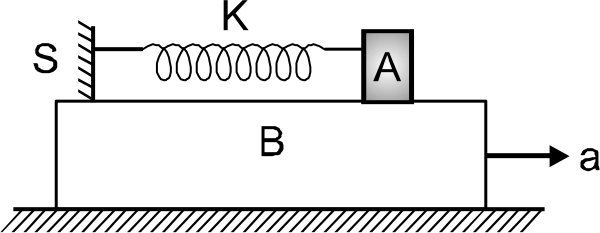 A12B2C1D4
A12B2C1D4
A dumbbell consists of two balls A and B of mass m=1 kg and connected by a spring. The whole system is placed on a smooth horizontal surface as shown in the figure. Initially the spring is at its natural length, the ball B is imparted a velocity v0=8√7m/s in the direction shown. The spring constant of the spring is adjusted so that the length of the spring at maximum elongation is twice that of the natural, length of the spring. Find the maximum potential energy stored (in Joule) in the spring during the motion.
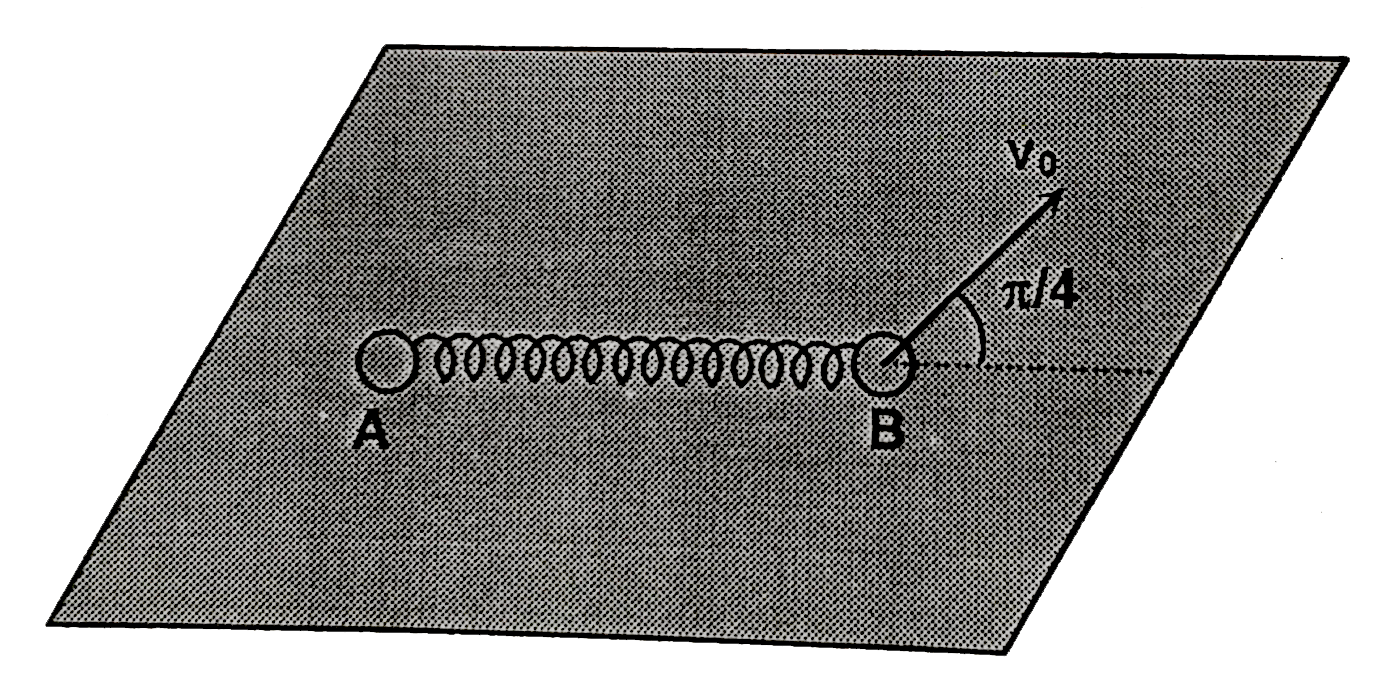
View SolutionA massless spring with a force constant K=40N/m hangs vertically from the ceiling.A 0.2kg block is attached to the end of the spring and held in such a position that the spring has its natural length and suddenyl released. The maximum elastic strain energy stored in the spring is (g=10m/s2)
View SolutionBlock A of mass m is placed on a plank B . A light support S is fixed on plank B and is attached with the block A with a spring of spring constant K. Consider that initialy spring is in the natural length, and the system is at rest. Find the maximum compression in the spring, if the plank B is moved with a constant acceleration 'a' . (All the surface are smooth) :
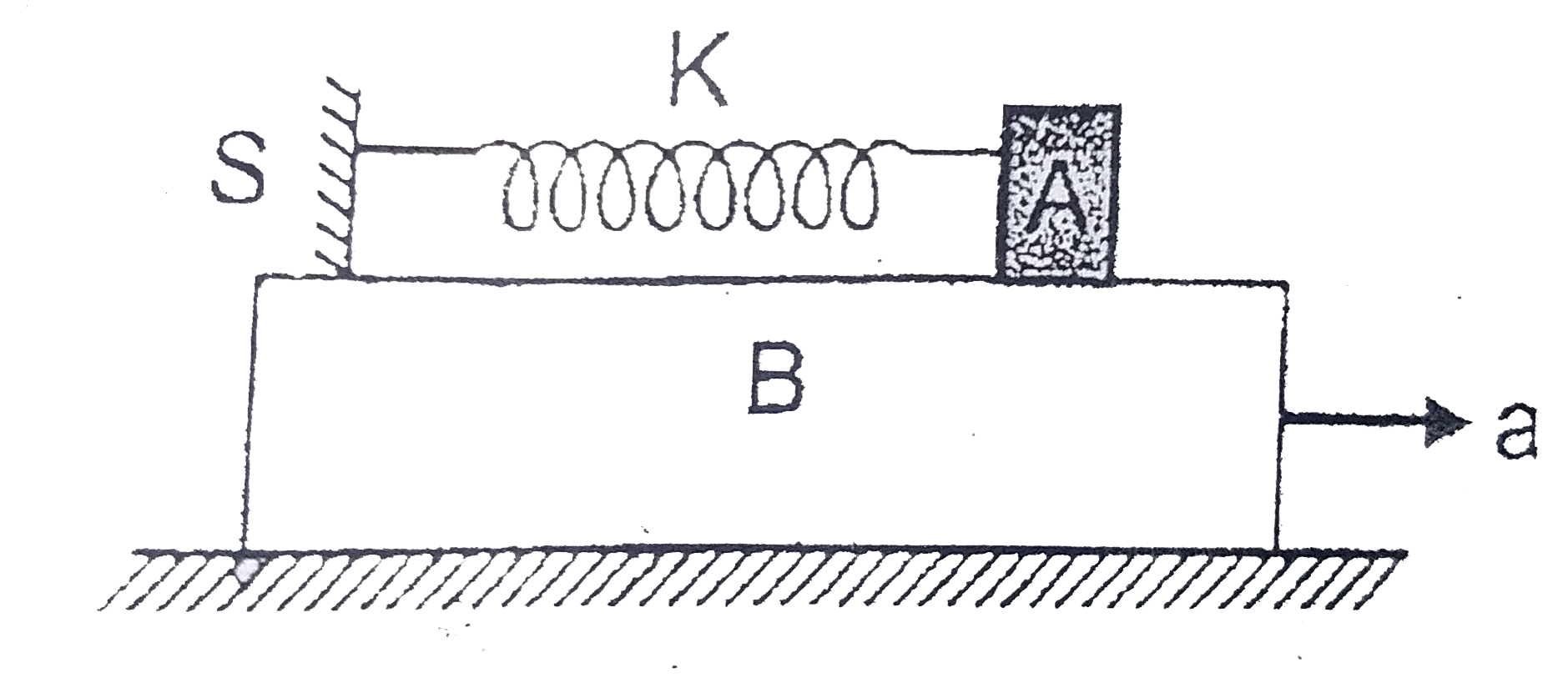
View SolutionThe system of the wedge and the block connected by a massless spring as shown in the figure is released with the spring in its natural length. Friction is absent. Maximum elongation in the spring will be
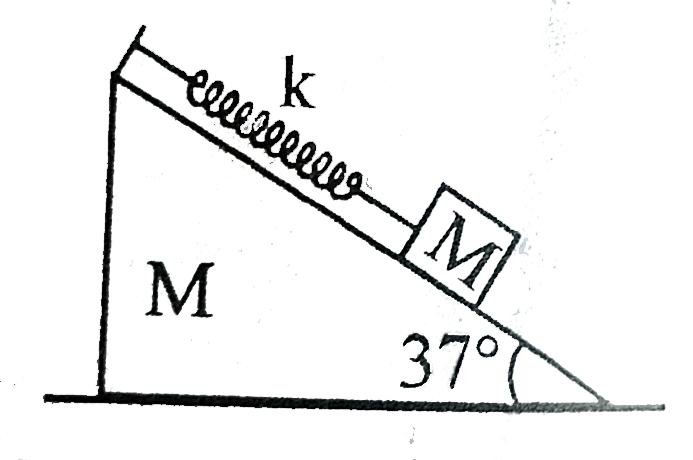
View SolutionMass m is connected with an ideal spring of natural length l whose other end is fixed on a smooth horizontal table. Initially spring is in its natural length l. Mass m is given a velocity 'v' perpendicular to the spring and released . The velocity perpendicular to the spring when its length l+x , will be
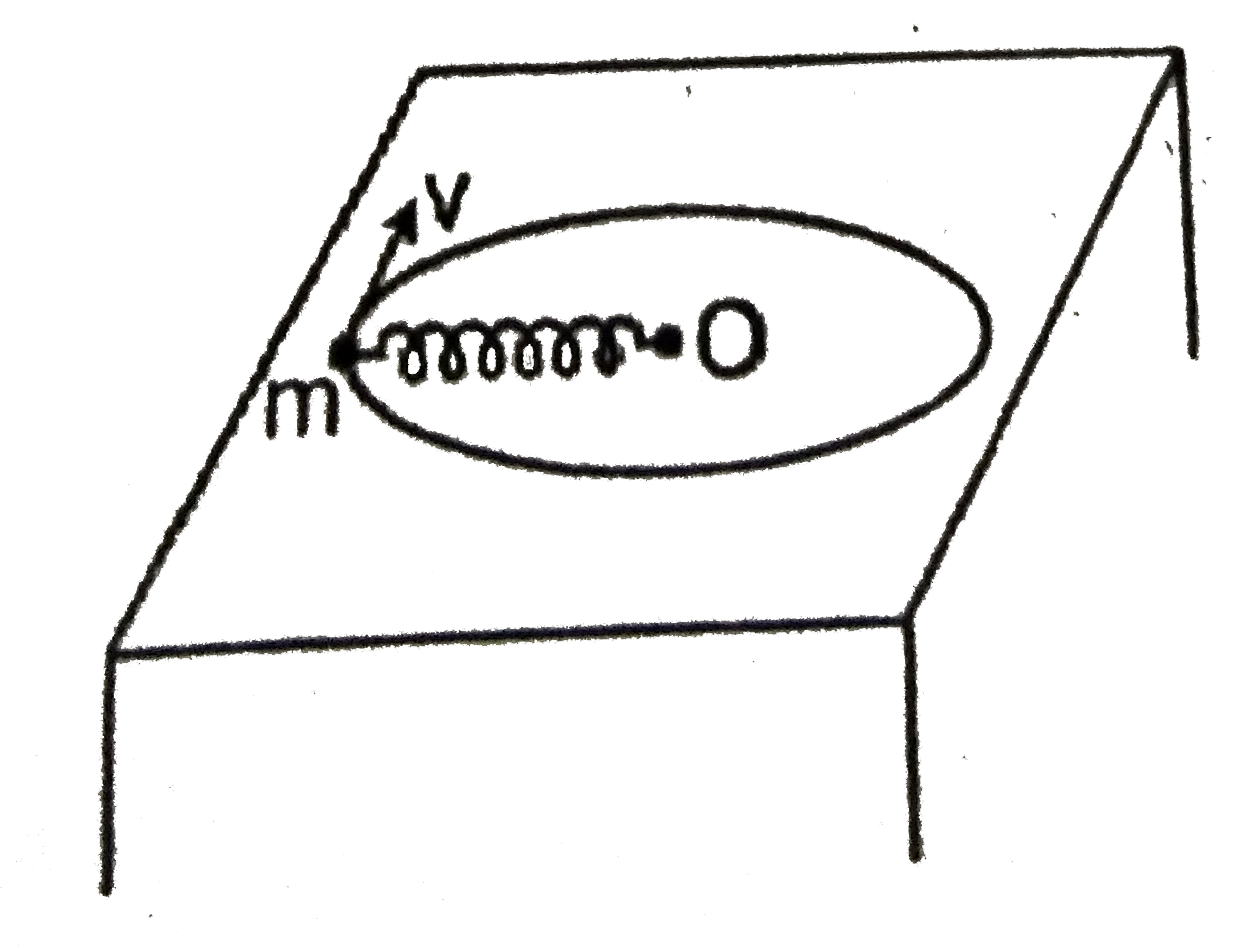
View Solution
